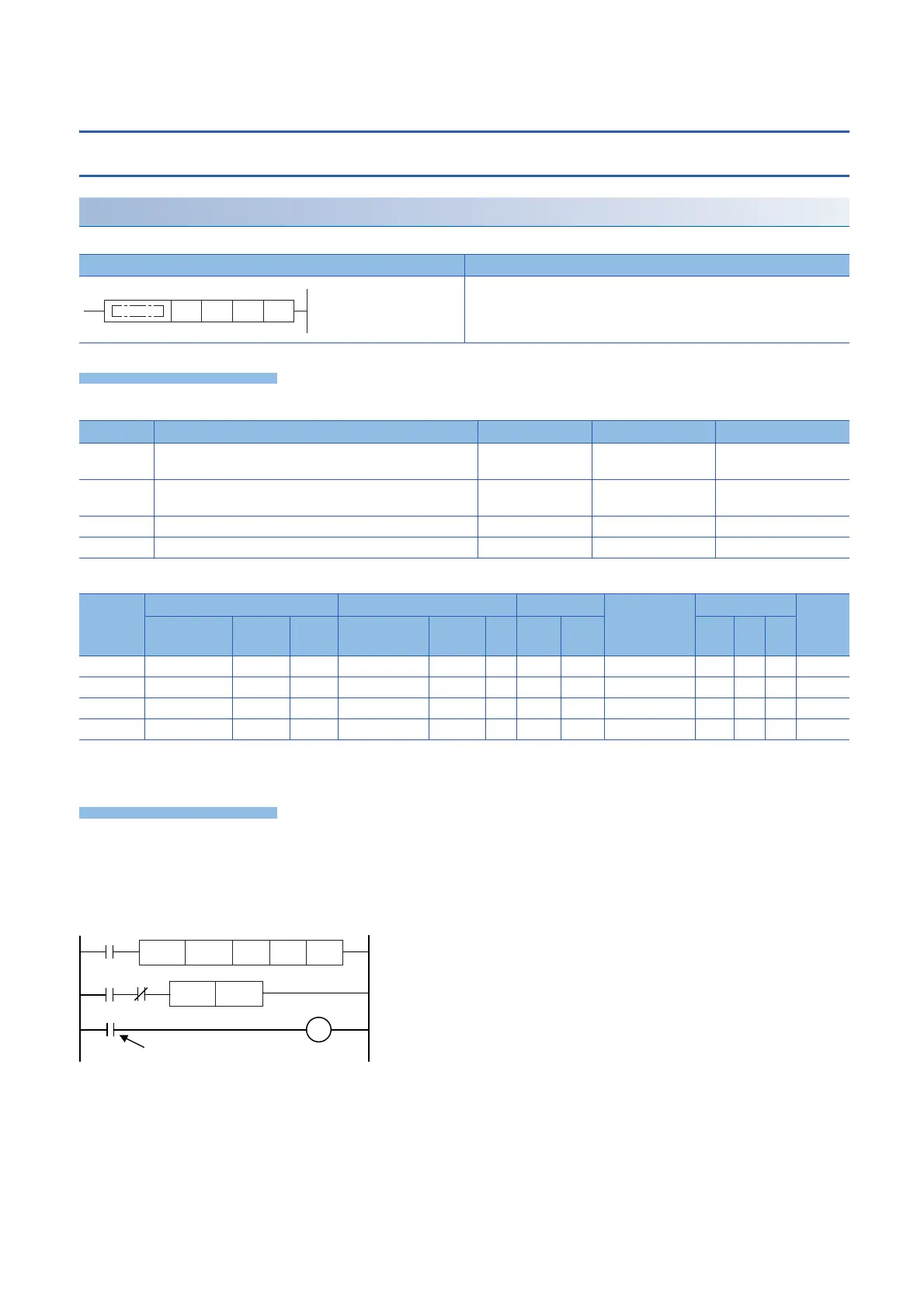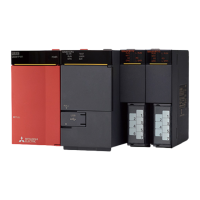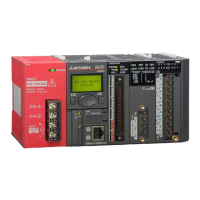538
7 APPLICATION INSTRUCTION
7.15 Drum sequence
7.15 Drum sequence
16-bit binary data absolute method
ABSD
This instruction creates many output patterns corresponding to the current value (16-bit binary data) of a counter.
■Descriptions, ranges, and data types
■Applicable devices
*1 Only C can be used.
*2 T, ST, C cannot be used.
• In this example, outputs are controlled to on or off by one table rotation (0 to 360 using the rotation angle signal of 1/
pulse).
• The current value (s2) of the counter is compared with the data table with "n" lines starting from (s1) (which occupies "n"
lines 2 devices), and consecutive "n" outputs starting from (d) are controlled to on or off during one rotation.
Ladder diagram Structured text
ENO:=ABSD(EN,s1,s2,n,d);
Operand Description Range Data type Data type (label)
(s1) Head device number storing the data table (with rising and falling
point data)
16-bit signed binary ANY16
(s2) Counter number for monitoring the current value compared with
the data table
16-bit signed binary ANY16
(d) Head bit device number to be output Bit Bit
(n) Number of lines in the table and the number of output bit devices 1 to 64 16-bit unsigned binary ANY16
Operand Bit Word Double word Indirect
specification
Constant Others
X, Y, M, L,
SM, F, B, SB
U\G T, ST,
C, LC
T, ST, C, D,
W, SD, SW, R
U\G Z LC LZ K, H E $
(s1)
(s2)
*1
(d)
*2
(n)
ABSD
RST
X1
(s2)
K360
(s2)
(s1) (s2) (d) (n)
(s2)
X1
Rotation angle signal of 1°/pulse
Command
input

